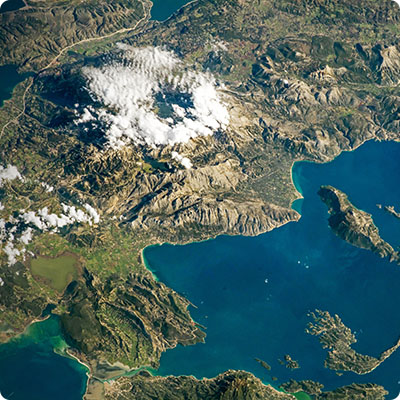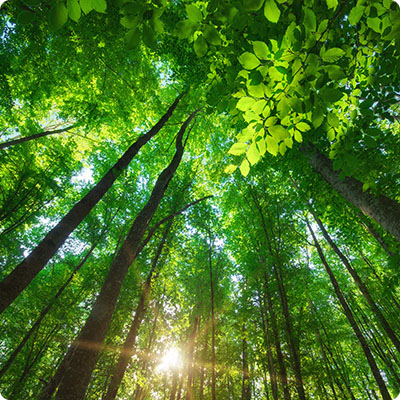Biodiversity under threat
According to WWF, which is particularly active in Borneo, the island's tropical forests are home to 6% of the world's biodiversity. On this island, living species have evolved in isolation from the mainland, resulting in a particularly high rate of endemism (living beings found nowhere else).
However, this ecological treasure trove is now threatened by particularly aggressive deforestation. To date, the island has already lost more than half its forests. Kalimantan, the Indonesian part of the island, alone lost an area the size of Belgium between 1985 and 2001.
There are many reasons for this hecatomb: mining activities, the timber trade and, of course, the much-publicized palm oil. Malaysia and Indonesia alone account for almost 90% of global production, which is also growing steadily. In Indonesia, the surface area of oil palm monocultures rose from 600,000 ha in 1985 to 6 million ha in 2007. This loss of habitat is causing the erosion of many species, such as the critically endangered Bornean orangutan(Pongo pygmaeus). And that's not all: deforestation leads to other problems, such as increasingly frequent fires in a weakened forest, drought problems and soil degradation.
The fact that the island is divided between three countries - Indonesia, Malaysia and Brunei - makes forest protection even more difficult, due to a lack of unity. But that period, at least, is over, because in 2007, the three states signed a landmark agreement to establish a 220,000 km2 core protected area entitled Heart of Borneo. This commitment has enabled the development of protected areas, and the rejection of projects for roads, logging or oil palm fields.
Worrying CO2 emissions
Deforestation has many disastrous consequences, including high carbon emissions. Forests are known for their ability to retainCO2, so much so that they have been described as carbon sinks. Unfortunately, felled trees release all the stored carbon dioxide. As a result, Indonesia is the world's 10ᵉ biggest emitter ofCO2, while Malaysia is 23ᵉ.
However, both countries are slowly beginning to implement an emissions reduction policy, involving not only the reduction of deforestation, but also the weaning of coal power, which is widely used, especially in Indonesia, and produces a lot ofCO2. As part of COP27, Indonesia received the sum of 20 billion dollars from developed countries to put an end to the use of coal and replace it with renewable energies. Thanks to these efforts, both Indonesia and Malaysia have succeeded in reducing theirCO2 emissions, in the former case, and stabilizing them in the latter.
Indonesia's capital, soon to be Borneo?
Jakarta, the capital of Indonesia, is moving! The reason: the city is becoming absolutely unliveable. The megalopolis needs more and more water, and could soon run out. There is also concern that Jakarta is located close to a tectonic fault, raising the possibility of a catastrophic earthquake. Above all, Jakarta is sinking underwater at an alarming rate of 6 cm per year. This is mainly due to overpopulation: the capital's urban area is home to almost 35 million people! This means not only many buildings, which weigh heavily, but also overexploitation of groundwater, which weakens the soil. As a result, it is estimated that Jakarta could be underwater by 2050!
So time is of the essence, and we'd like the city to pack its bags as early as 2024, and move 1,000 km away to Kalimantan, the Indonesian part of Borneo. The city is already under construction, with a planned population of 5 million. However, the decision to relocate the capital was taken without any study of the environmental impact of building a megalopolis in the middle of the rainforest. While the government promises a city in harmony with the forest, local and international NGOs fear further destruction of the habitat of numerous species, as well as that of indigenous communities.
Borneo's national parks
Each of the three countries that share Borneo has created conservation areas to protect its rich biodiversity. Reflecting a growing ecological awareness, these areas vary in their degree of regulation, and can be reserves, sanctuaries or national parks, either marine or terrestrial.
In Malaysia, Gunung Gading National Park in the state of Sarawak is best known for one of its inhabitants: the rafflesia(Rafflesia arnoldii). This leafless parasitic plant has only a few filaments, anchored in the liana from which it draws its energy. Its only visible attribute is its flower: the largest in the world! The Unesco-listed Kinabulu National Park is home to the highest peak on the island, and in Malaysia: Mount Kinabalu, 4,095 m high. Its tropical forests, with varying degrees of undulation, are a veritable paradise for hikers, who can try their hand at the world's highest via ferrata.
On the Indonesian side, the parks have nothing to envy their neighbors. For example, Tanjung Puting National Park, recognized as a biosphere reserve by UNESCO, is home to so many living species. The park is home to one of the world's largest populations of orangutans. Kayan Mentarang National Park, the island's largest, is also home to a wealth of wildlife, including the Malayan pangolin, the crab-eating macaque and other endangered species such as the Müller's gibbon.
Finally, in Brunei, in the north of the island, the Ulu Temburong National Park is the pride of the sultanate. Nicknamed "the green jewel of Brunei", it boasts a luxuriant jungle rich in fascinating species, such as the Rhinoceros Hornbill, a bird with an enormous beak topped by a kind of horn.















